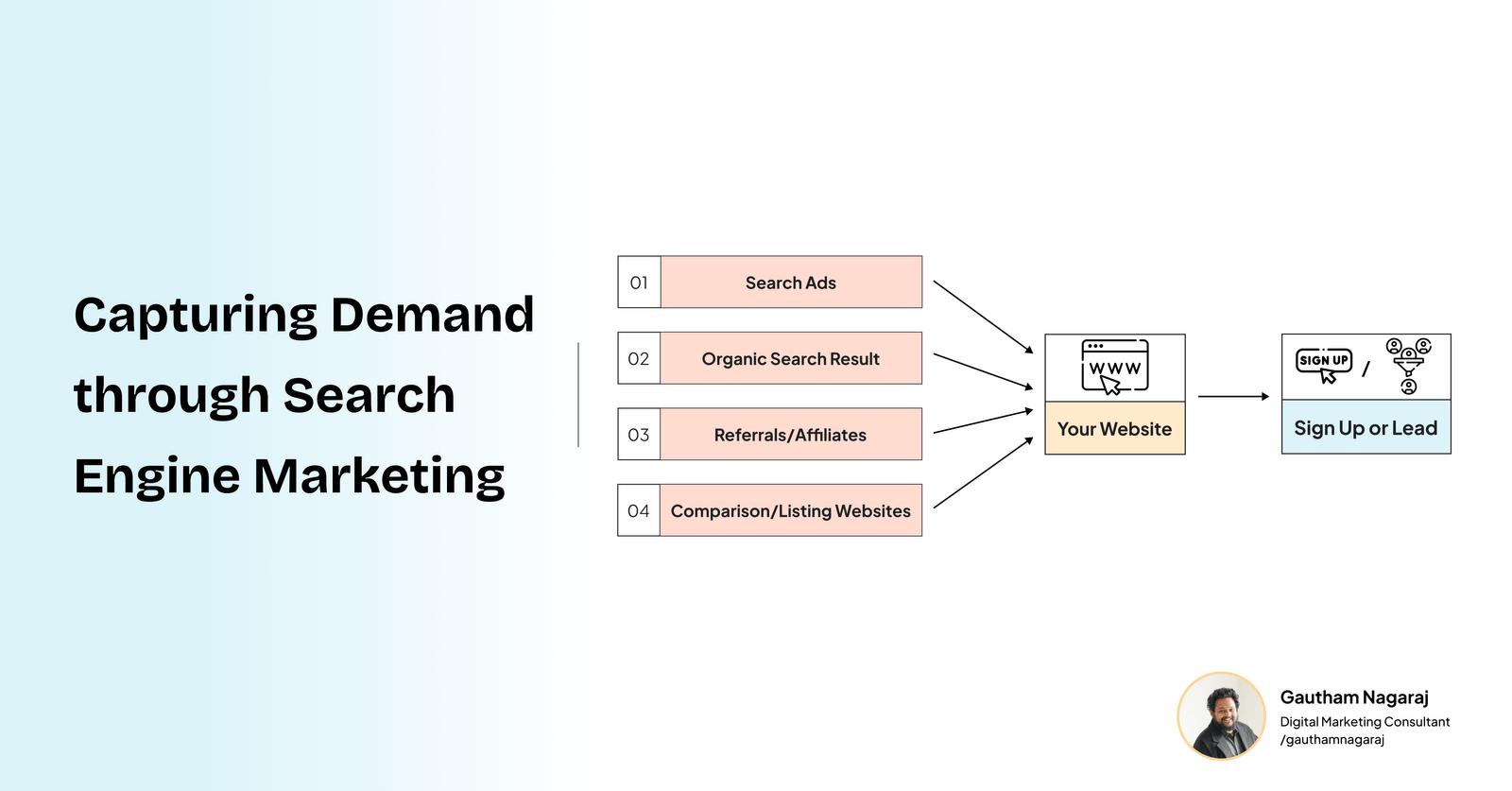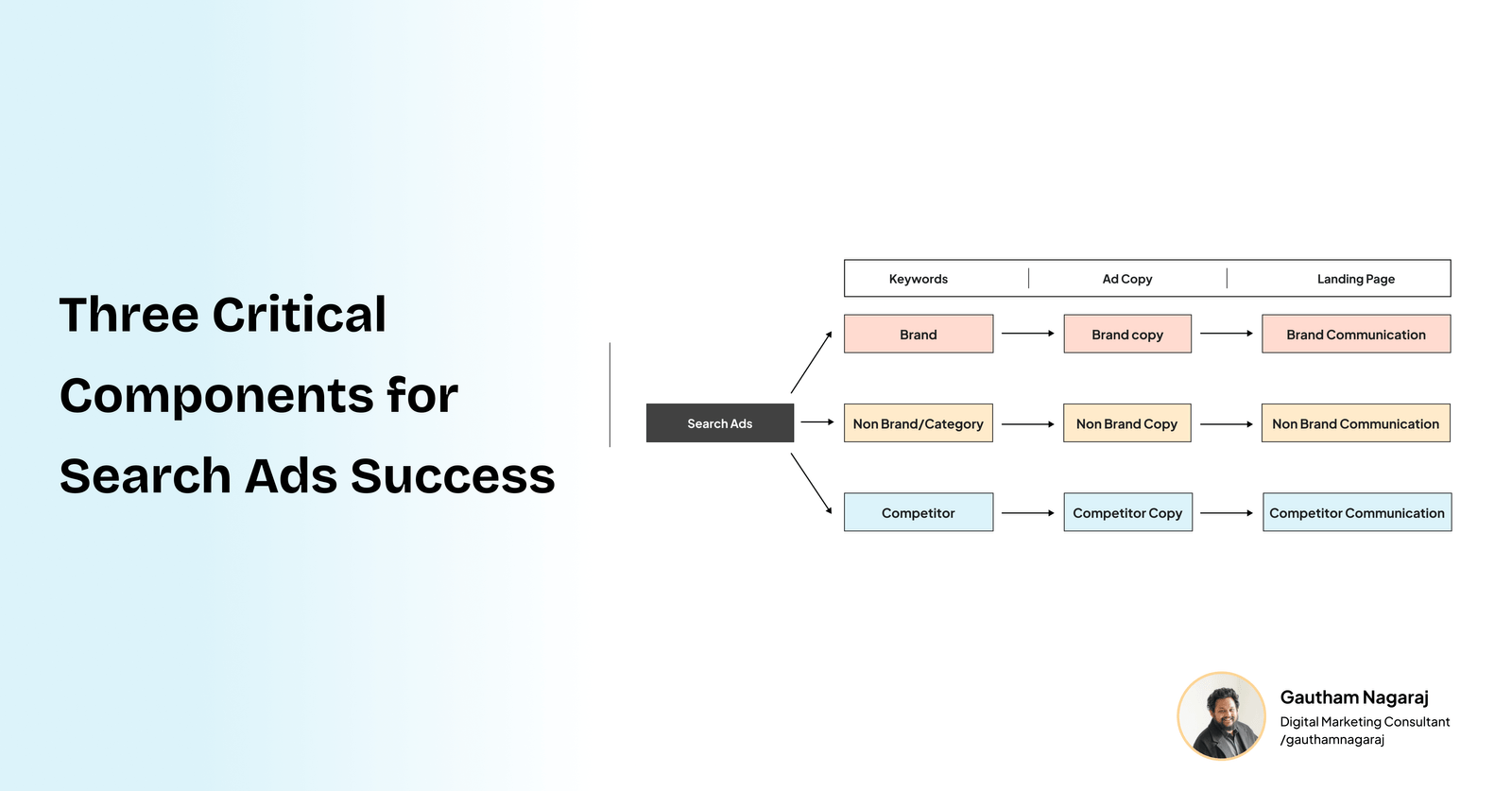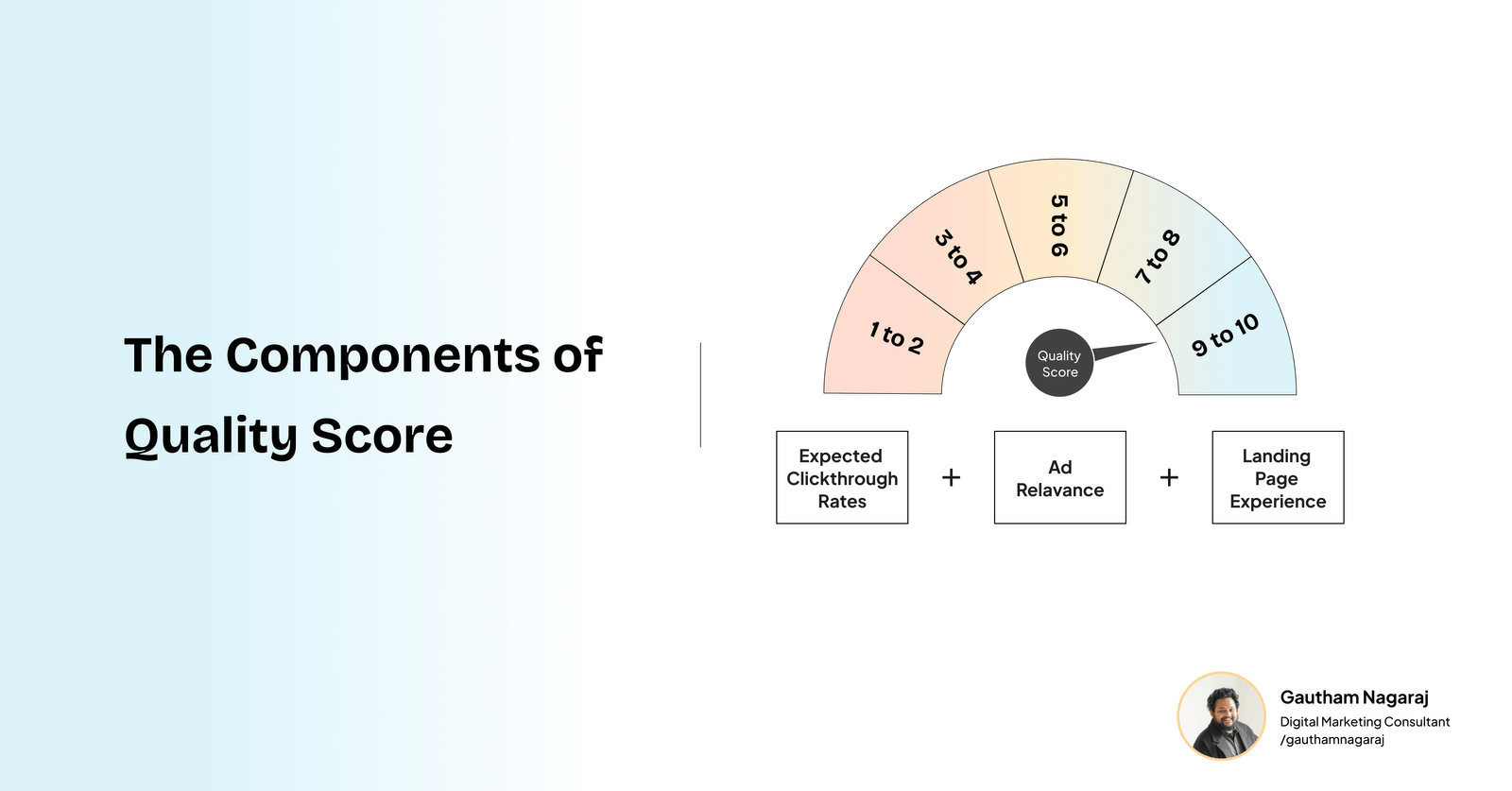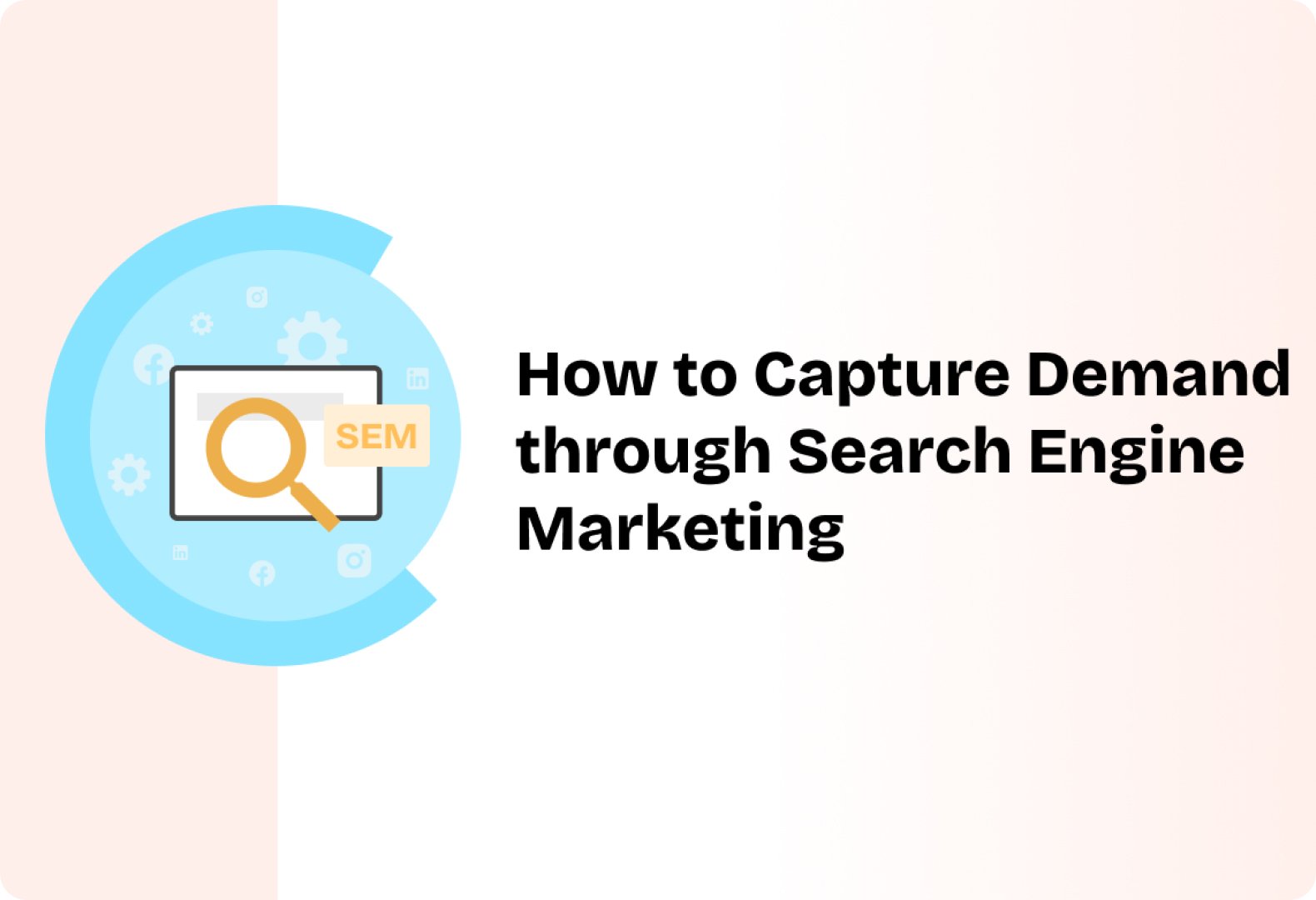In the digital era, capturing the demand of consumers is not just about creating it; it's about tapping into the existing queries and desires that lead them online. Search Engine Marketing (SEM) is the art and science of meeting the user right at the point of their need. This blog explores the intricacies of demand capturing through SEM, a potent tool for businesses to attract, engage, and convert high-intent prospects into loyal customers.
What is Demand Capturing?
Demand capturing refers to the strategies and tactics businesses use to attract potential customers who are already looking for products or services similar to what they offer. It’s about positioning yourself to be found by consumers who have identified a need and are actively seeking a solution. This is the low-hanging fruit of the marketing world; the customers are ripe for the picking because they are already halfway down the sales funnel.
What is Search Engine Marketing?
Search Engine Marketing is the process of gaining website traffic by purchasing ads on search engines. It's a powerful way to grow your business in an increasingly competitive marketplace. With millions of businesses out there all vying for the same eyeballs, it’s never been more important to advertise online, and SEM is the most effective way to promote your products and get your brand on the map.
Demand Capturing vs. Demand Generation
While demand generation is about creating interest in your products or services, demand capturing is about harnessing existing interest. Demand generation is top-of-funnel—it's broad, aiming to reach new audiences. Demand capturing, on the other hand, is bottom-of-funnel. It targets prospects who already have a high intent to purchase, making it a critical strategy for immediate conversions.
The Customer Buyer Journey Funnel
The customer buyer journey funnel represents the stages a customer goes through before making a purchase. At the top of the funnel, you have awareness; in the middle, consideration; and at the bottom, decision. Demand capturing focuses on the decision stage of the funnel, where the potential for conversion is highest.
This approach is effective because it focuses on prospects who are ready to sign up or purchase, as shown by their active search behaviors.

The Importance of Demand Capturing
Capturing demand is crucial because it's about efficiency and effectiveness. It's efficient because you're investing in prospects who have already expressed interest, and effective because these prospects are more likely to convert. Moreover, by targeting consumers at the bottom of the funnel, businesses can achieve a higher return on investment (ROI) with their marketing efforts.
Strategic Channels for Demand Capture in Search Engine Marketing
Search Engine Marketing (SEM) isn't a one-lane highway; it's a multi-faceted approach that leverages various digital channels to capture consumer demand efficiently. The strategies for capturing demand are as dynamic as the market itself, and understanding the roles different SEM channels play is pivotal.

1. Search Ads: The Frontline of Visibility
Search ads are perhaps the most direct method of capturing demand. They place your brand at the top of search engine results, immediately visible to those who are actively searching for the keywords you've bid on. The power of search ads lies in their ability to grant prime digital real estate to your brand, ensuring that you are the first option a high-intent prospect sees.
As depicted in the image, search ads act as a beacon, directing traffic straight to your website. They are the front-runners in SEM, offering a fast lane to your digital doorstep for potential customers.
2. Organic Search Results: Building Trust through Relevance
While paid search ads put you in the spotlight, organic search results build trust through relevance and authority. Ranking high in organic search results is a testament to your site's quality and the value it provides to users. It's the result of effective SEO practices, such as keyword optimization, quality content, and a seamless user experience.
3. Referrals/Affiliates: Leveraging Networks for Credibility
Referrals and affiliates act as third-party endorsers, guiding users to your website through their platforms. This channel can be particularly effective because it combines the high intent of search behaviors with the trust that users have in the referring website or affiliate marketer.
4. Comparison/Listing Websites: Showcasing Competitive Advantage
Finally, comparison and listing websites serve as aggregators that help users make informed decisions by presenting options side by side. Being featured on these platforms allows prospects to evaluate how your offerings stack up against the competition. For a consumer ready to make a decision, these websites can be the final nudge towards choosing your brand.
Bridging the Gap between Demand and Conversion
Each of these channels not only drives traffic to your website but also bridges the gap between latent demand and active conversion. The image perfectly encapsulates this flow, from the visibility of search ads to the final action of signing up or generating a lead. It illustrates that capturing demand is not merely about awareness; it's about strategically guiding potential customers towards a committed action, in this case, a sign-up or a lead which symbolizes the transition from interest to decision.
In the art of SEM, these channels are not standalone; they work in concert to create a web of touchpoints that ensure whenever and wherever a potential customer is looking, your brand is present, relevant, and compelling enough to capture that demand and transform it into tangible business results.
The Art of Keyword Segmentation in Search Engine Marketing
One of the most critical aspects of Search Engine Marketing (SEM) is the ability to segment and target ads based on specific criteria. By breaking down your search ad strategies into distinct categories, you can tailor your messaging and positioning to meet the diverse needs and behaviors of searchers. This segmentation ensures that your ads are not only seen but are also relevant and compelling.
Brand Keywords: Capturing Brand-Loyal Searchers
Targeting brand keywords means your ads will appear when someone searches for your brand name or specific branded products. This is a crucial strategy to capture the demand of those who already have a certain level of awareness and loyalty to your brand. It's about reinforcing your presence and directing these users to the right place—your website.

The image illustrates how brand targeting puts your ads in front of those who are already inclined towards your brand, ensuring that they are not swayed by competitors' ads.
Non-Brand Keywords: Expanding Reach to Interested Searchers
Non-brand or category keywords are those that relate to the industry, product type, or service offerings without directly referencing your brand. This strategy is used to capture the attention of potential customers who may not be aware of your brand but are interested in the products or services you offer. It's a way to expand your reach and introduce your brand to a new audience who has demonstrated interest in your category.
Competitor Keywords: Attracting Competitor's Audience
Competitor keyword targeting involves bidding on keywords related to your competitors' brands. It's a bold strategy aiming to capture the demand from customers who are considering or looking for your competitors. This tactic can be beneficial when you have a competitive advantage or unique selling proposition that sets you apart from those competitors.
The Strategic Mix
Each of these segments requires a different approach in terms of ad copy, landing pages, and overall messaging. For instance, brand keywords can focus on loyalty and the latest offerings, non-brand keywords on educating potential customers about your products, and competitor keywords on comparing and demonstrating why your brand is the better choice.
As the image emphasizes, a well-rounded SEM strategy does not rely on a single type of keyword targeting but employs a mix to cover all potential areas where demand can be captured. By doing so, businesses can ensure they're not only defending their brand terms but also proactively capturing new customers and even some from the competition. This segmentation is a powerful way to maximize the effectiveness of your SEM campaigns and ensure that you're capturing demand at every possible opportunity.
Three Critical Components for Search Ads Success: Keywords, Copy, and Landing Pages
In the realm of Search Engine Marketing (SEM), the ad copy is the soul of the campaign. It is the first interaction a potential customer has with your brand, and it sets the stage for the communication that follows. The creation of ad copy should be strategic and tailored to the intent behind the keywords being targeted

Brand Keywords: Messaging that Resonates with Recognition
When creating ad copy for brand keywords, the focus is on strengthening brand recognition and loyalty. The messaging should resonate with the familiarity that the audience already has with the brand, emphasizing unique selling points and the latest offers or updates. The goal is to reinforce brand preference and encourage clicks from users who have a pre-existing affinity for the brand.
Non-Brand/Category Keywords: Educating and Engaging the Curious
Non-brand or category keyword ad copy must educate and engage users who are in the discovery phase. This copy should highlight the benefits and differentiators of the brand without the assumption of prior knowledge. It’s about capturing the interest of those who are looking for a solution but haven't yet decided on a brand. The messaging here bridges the gap between the user's need and the brand's offering, often focusing on broader terms that relate to the category as a whole.
Competitor Keywords: Competitive Positioning to Win Over Shoppers
Ad copy for competitor keywords is a unique challenge. It requires a balance between tact and assertiveness. This copy must position the brand as a better alternative to the competitor being searched for, often by highlighting superior features, pricing, or customer service. The messaging should be crafted in a way that it piques the curiosity of someone considering a competitor, enticing them to consider a new option.
From Copy to Communication: The SEM Continuum
The journey from keywords to landing pages is a continuum of communication, and the ad copy is the driving force. The transition from ad copy to landing page should be seamless, delivering on the promises made in the ad and providing a cohesive experience that leads to conversion.
The image clearly delineates the progression from keyword to landing page, emphasizing the need for consistency in messaging throughout the user's journey. Brand copy leads to brand communication, non-brand copy to non-brand communication, and competitor copy to competitor communication. Each step in this process is crucial and must be handled with care to ensure that the potential customer's journey from searcher to buyer is not just seamless, but also compelling enough to result in conversion.
This targeted approach in crafting ad copy is not just about being seen—it's about being relevant, persuasive, and ultimately, about being the chosen one amidst a sea of options. By meticulously aligning ad copy with the user's search intent and the brand's unique value proposition, businesses can effectively capture demand through SEM and turn prospects into loyal customers.
Understanding and Enhancing Quality Score in Google Ads
Quality Score is a fundamental metric in Google Ads, as it influences both the cost and effectiveness of your search advertising campaigns. It is Google's rating of the quality and relevance of both your keywords and PPC ads. A higher Quality Score equates to more ad impressions at lower costs, making it a crucial element for successful SEM campaigns.
The Components of Quality Score
Quality Score is determined by several factors including:
- Click-Through Rate (CTR): This measures how often people who see your ad end up clicking it. CTR is a strong indicator of how relevant your ads are to the searchers' queries.
- Ad Relevance: This assesses how closely your ad matches the intent behind a user's search. Google evaluates whether your ad is useful to the searcher based on the keywords you've bid on.
- Landing Page Experience: This gauges the relevance and quality of your landing page. Google looks at how well your landing page gives people who click on your ad exactly what they're looking for.

Improving Quality Score
To enhance your Quality Score, consider the following strategies:
- Refine Ad Copy: Ensure that your ad copy closely matches your target keywords and speaks directly to the searcher's intent. The more your ad copy resonates with the searcher, the higher the likelihood of a click, thereby improving your CTR.
- Optimize Landing Pages: Your landing pages should provide a seamless user experience with relevant, original content, and a clear call-to-action. This not only aids in converting visitors but also positively affects your Quality Score.
- Keyword Relevance: Regularly review and refine your keyword lists. Add new high-performing keywords and remove those that are underperforming to keep your campaigns tightly themed and relevant.
- Use Negative Keywords: Help Google better understand the context of your ads by adding negative keywords. This will prevent your ads from showing up for unrelated searches, which can improve the CTR of your campaigns.
The Impact of Quality Score
A higher Quality Score can lead to better ad positions and lower costs per click (CPC). This is because Google rewards advertisers who provide the most relevant experiences to searchers. By focusing on creating ads that are valuable to your audience, you're not only serving their needs better but also running a more cost-effective campaign.
Incorporating the visual cues from the image into your strategies, remember that each element of your SEM campaign should work towards enhancing your Quality Score. From the choice of keywords and the crafting of ad copy to the design and content of your landing pages—every component should be optimized for relevance and quality. By doing so, you'll be better positioned to capture demand through search engine marketing, driving high-quality traffic to your site while managing costs effectively.
Deep Dive into Organic Search Results
Organic search results are the listings on a search engine results page (SERP) that appear because of their relevance to the search terms, as opposed to their being advertisements. To rank well organically requires a deep understanding of search engine optimization (SEO) and a commitment to best practices.
Building Trust with SEO
SEO is about more than just inserting keywords into content; it's about crafting a user experience that is both informative and easy to navigate. Trust is built over time by consistently providing value through well-researched and well-written content. The content must be authoritative, meaning it is accurate, provides a depth of information, and comes from a credible source.
Technical SEO and User Experience
On the technical side, ensuring that your website is optimized for speed, mobile usage, and contains no broken links or crawl errors is crucial. Technical SEO lays the foundation for a good user experience, which is a significant ranking factor. A seamless user experience keeps visitors on your site longer, reducing bounce rates and increasing the chances of conversion.
The Role of Backlinks
Backlinks, which are links from other websites to your site, also play a critical role in organic search rankings. They act as votes of confidence from one site to another, signaling to search engines that others vouch for your content. Acquiring high-quality backlinks from reputable sites can vastly improve your site’s authority and thus its organic ranking.
The Power of Referrals and Affiliate Marketing
Referral and affiliate marketing are all about leveraging the trust and authority of others to drive traffic and sales. These methods involve partnering with other websites, influencers, or businesses to promote your products or services.
The Trust Factor in Referrals
When a user comes to your site from a trusted referral source, they bring with them a level of trust in that source. This trust transfers to your brand, making them more likely to engage with your content and offerings. The key to successful referral marketing is to form partnerships with organizations or individuals that share your target audience and have established their credibility.
Maximizing Affiliate Relationships
Affiliates promote your products in exchange for a commission on sales or leads they generate. To make the most out of affiliate relationships, you need to provide them with all the necessary resources to effectively market your products. This includes high-quality creatives, product information, and any other material that can help them tell your brand’s story.
Utilizing Comparison and Listing Websites
Comparison and listing websites are the go-to for many consumers when they are close to making a purchase decision. These platforms provide a service by allowing users to compare features, prices, and reviews of different products or services in one place.
Showcasing Your Brand’s Strengths
To stand out on comparison sites, your product or service information should be detailed and up to date. Highlight what sets your brand apart, be it price, features, customer service, or any other unique selling proposition. Authentic and positive customer reviews can also bolster your credibility on these platforms.
Conversion Optimization
Ensure that your listings on these sites are optimized for conversion. This includes clear calls-to-action, attractive visuals, and easy navigation to the purchase page. Remember, users on these sites are often at the final stage of the buying process, so your goal is to make the path to purchase as straightforward as possible.
Conclusion
In conclusion, capturing demand through SEM is a strategic approach to marketing that aligns with the consumer's existing search behaviors and high intent to purchase. It’s a method that complements the wider marketing strategy, providing a focused and tactical angle that ensures your marketing dollars are spent on consumers closest to the point of sale.
Demand capturing is not just an option in today's competitive landscape; it's a necessity for those who want to secure their market share and grow their business. By employing the tactics discussed, businesses can effectively capture the demand through SEM and enjoy the fruits of high-intent consumer engagement.


